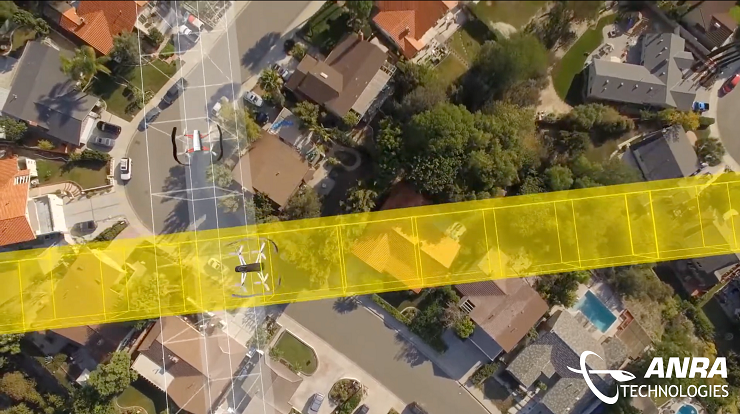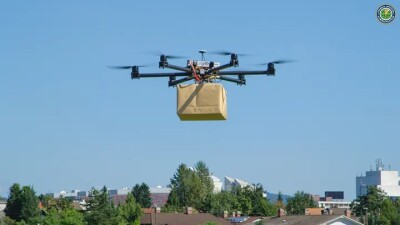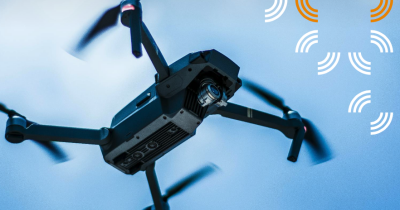Billed as the first commercial deployment of UAS Traffic Management (UTM) in the US, the UTM Key Site is now up and running in the Dallas-Fort Worth (TX) area. A collaborative effort involving several drone delivery companies, along with UTM service provider ANRA Technologies, the Key Site will gather data from uncrewed operations and use that information to help shape the FAA’s policy decisions concerning beyond visual line of site (BVLOS) operations.
To learn more about the UTM Key Site, Commercial UAV News spoke with Amit Ganjoo, the Founder and CEO of ANRA Technologies. We discussed the origins and goals of the test site, and the ways commercial UAV operators can contribute to policymaking around drone flights.
Commercial UAV News: Can you give us some background on the UTM Key Site? How did it come into being?
Ganjoo: Following the momentum around scaled UAS services—particularly around drone delivery—in the greater North Texas area in late 2023 and early 2024, several operators noted the inherent need to communicate amongst each other. Understanding the need to share airspace amongst scaled operations and leverage applicable standards, seven operators engaged in a project to operationalize strategic conflict detection in the Dallas-Fort Worth area.
Commercial UAV News: What kinds of operations are taking place at the site?
Ganjoo: Participants in the current collaboration stemming from the active drone delivery market in North Texas are onboarding to or actively participating in simulations representing true, day-in-the-life operations. The first live flight occurred June 21 between Wing-Manna (with ANRA), and these simulations will progress to live flights through mid-2024. Companies have reached consensus on governance and data sharing and have signed and implemented agreements and is known as the North Texas Shared Airspace Implementation. Initial planning activities were coordinated by the Virginia Tech Mid-Atlantic Aviation Partnership and leverage contributions from Global UTM Association (GUTMA) and the InterUSS Platform. The effort is applicable to UTM across the US.
Commercial UAV News: What companies and organizations are involved, and what roles do they play?
Ganjoo: Wing Aviation, DroneUp, and Zipline have vertically integrated systems that include UTM services. Manna is also participating and is using ANRA’s services for UTM as a Service Provider. NASA and the FAA are collaborators and there is an ongoing effort to include local public safety entities.
Commercial UAV News: What impact will this work have on the FAA’s rules around BVLOS flights?
Ganjoo: The FAA views the North Texas Shared Airspace Implementation as a UTM Key Site Operational Evaluation, a critical path item to inform BVLOS rulemaking. This includes collaborating with industry to validate content, formats, and messaging, defining performance metrics, developing guidance material to support implementation of the standards, and managing conflicting operations in accordance with relevant UTM standard(s) and business rule development. And—aside from rulemaking—North Texas Shared Airspace Implementation services are expected to be accepted by the FAA per the Near Term Approvals Process (NTAP) and incorporate participation and feedback from the FAA and NASA.
Commercial UAV News: Are there other projects going on at the key site?
Ganjoo: Yes. Regarding conflict detection, operations will occur within the Dallas Mode C Veil, requiring all crewed aircraft to be equipped with ADS-B. Key Site Operators will use this information for deconflicting drone operations with crewed operations. Also, regarding public safety, the ecosystem is open to service providers and their operators. Providers of UTM services, including private and public entities and organizations, are eligible and encouraged to join this agreement. NASA is coordinating public safety participation and integration in the North Texas Shared Airspace Implementation.
Commercial UAV News: How can commercial drone companies or operators engage or support your efforts?
Ganjoo: The ecosystem is open to service providers and their operators. Providers of UTM services, including private and public entities and organizations, are eligible and encouraged to join and can view key documents, which include onboarding instructions, Service and Governance agreements, and Requirements Traceability at https://github.com/utmimplementationus/getstarted.
Participation in the shared airspace ecosystem enables collaboration, communication, and governance of shared airspace, aiming to integrate strategic coordination services to enable dense, overlapping BVLOS operations. Key site participants will be able to leverage shared operational and governance resources to develop, verify, and advance your approach to sharing the airspace. This is an opportunity to learn from collaborative efforts and participate in democratized foundations of a shared airspace. Also, Service Providers can service operators by conveying digital intent and deconflicting flight paths. With revised FAA requirements for risk mitigation, and meeting industry-consensus standards, shared airspace offers a digital, transparent, and scalable process.
Commercial UAV News: What’s next? Are there new projects, plans, or operations in the works?
Ganjoo: At the invitation of NASA, local public safety will join the North Texas Shared Airspace Implementation. Since ANRA is the only non-vertically integrated Service Provider currently participating in the Op/Eval, ANRA is able to provide services to Public Safety organizations that are operating drones in the same airspace. Efforts are ongoing for ANRA to provide services to local Public Safety organizations.















Comments